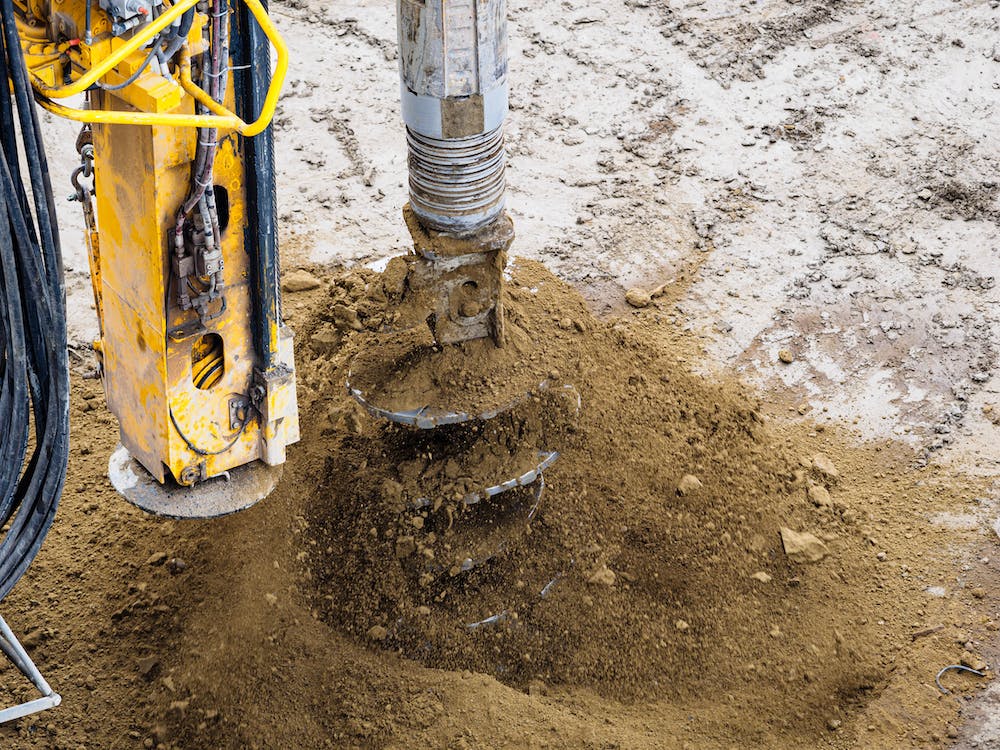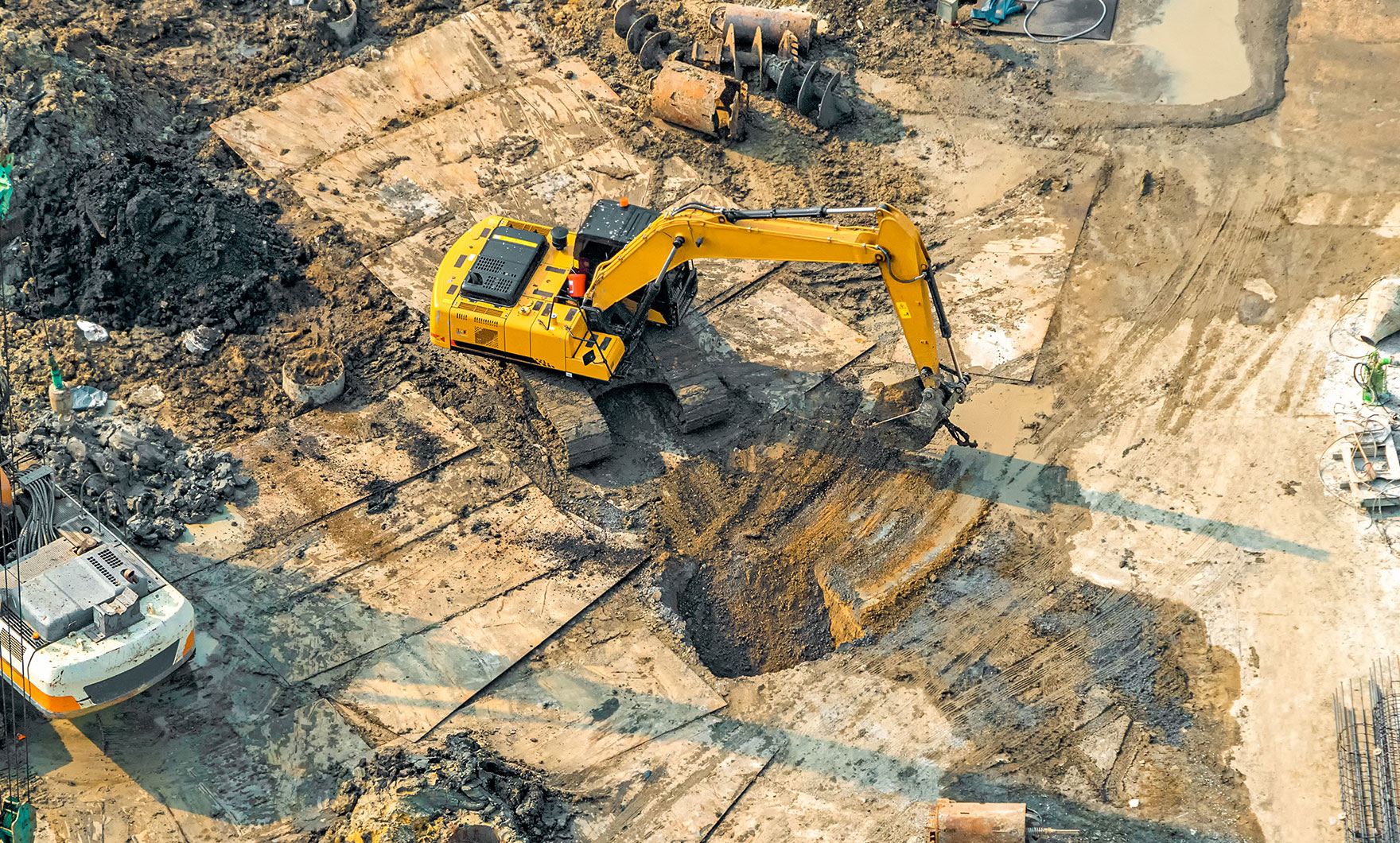Checking Out the Basic Concepts and Applications of Geotechnical Engineering for Lasting Facilities Development
The intersection of geotechnical design and sustainable facilities advancement provides an engaging possibility to boost both style efficiency and ecological duty. By comprehending essential principles such as soil mechanics, site characterization, and foundation design methods, engineers can produce services that are not just effective however likewise minimize ecological impacts. Moreover, the integration of sustainable practices into geotechnical projects elevates inquiries regarding source utilization and lasting resilience. As we analyze these concepts, the implications for future facilities projects require careful consideration, particularly in an age progressively defined by ecological obstacles.
Trick Principles of Geotechnical Design
Comprehending the key concepts of geotechnical engineering is vital for developing sustainable framework (geotechnical companies in south africa). This discipline concentrates on the interaction between dirt, rock, and structures, playing a crucial function in the security and efficiency of design tasks. The primary principle is the assessment of subsurface problems through site investigations, which supply valuable information regarding soil residential or commercial properties, stratification, and groundwater degrees
One more essential principle is the application of efficient stress theory, which assists engineers comprehend just how soil habits changes under varying loads. This understanding is essential for evaluating the bearing capability of structures and guaranteeing that structures can stand up to both fixed and vibrant forces.
In addition, the principles of soil-structure interaction and incline stability are important to geotechnical layout, as they notify choices on the placement and style of keeping slopes, wall surfaces, and embankments.
Lastly, geotechnical designers have to take into consideration sustainability by promoting making use of in your area sourced products, decreasing environmental effect, and optimizing layouts for durability. By sticking to these principles, geotechnical design adds dramatically to the development of lasting and resilient framework that meets the requirements of society while shielding the atmosphere.
Soil Mechanics and Its Relevance
Soil auto mechanics works as the structure of geotechnical engineering, offering the clinical principles needed to evaluate the actions of soil under various conditions. Comprehending soil mechanics is crucial for forecasting how soil will certainly react to tons, modifications in dampness web content, and various other environmental aspects. This knowledge allows engineers to develop frameworks that can stand up to the pressures exerted by the soil and make certain security and safety and security.
The study of dirt auto mechanics incorporates numerous facets, including soil classification, shear stamina, compressibility, and permeability. These elements affect the design of foundations, retaining walls, and other geotechnical frameworks, making it necessary to examine dirt properties accurately. The shear stamina of soil directly affects the security of excavations and inclines, while compressibility affects settlement forecasts for structures.
Moreover, dirt auto mechanics plays an important function in sustainable framework growth. By understanding the soil's habits, engineers can decrease ecological influences, optimize material usage, and enhance the longevity of structures. This assimilation of dirt auto mechanics right into geotechnical engineering practices not only makes sure security but also adds to the total sustainability of construction jobs, advertising efficient resource administration and ecological stewardship.
Site Characterization Strategies
Reliable website characterization strategies are critical for collecting necessary information concerning subsurface problems prior to building - geotechnical companies in south africa. These strategies supply valuable insights right into soil properties, rock formations, groundwater levels, and possible geohazards, thereby informing job design and mitigating dangers
One extensively used method is drilling, which enables straight tasting of dirt and rock layers. This can be matched by in-situ screening, such as Typical Penetration Examinations (SPT) and Cone Infiltration Examinations (CPT), to review soil strength and stratification. Geophysical techniques, including seismic refraction and electrical resistivity surveys, make it possible for non-invasive assessment of subsurface products and structures, offering a more comprehensive point of view on geological conditions.
In addition, research laboratory testing plays a vital role in evaluating soil examples acquired from boring. Examinations such as grain size analysis, Atterberg limits, and triaxial shear examinations produce critical information on soil behavior under various loading problems.
Incorporating these site characterization methods not only boosts the understanding of website problems yet likewise supports lasting facilities advancement by making certain that tasks are designed with appropriate safety and security margins and performance requirements. Hence, a detailed website characterization is vital for informed decision-making in geotechnical design.
Foundation Layout Techniques
Structure style strategies are essential for making certain the security and long life of structures in various geotechnical contexts. These methods begin with a thorough website examination, that includes soil testing and analysis to determine the physical homes of the subsoil. Recognizing dirt actions under load is important for selecting the appropriate structure kind, whether shallow or deep.
Shallow foundations, such as spread Visit Website grounds or floor covering foundations, are generally utilized when suitable soil layers are available near the surface. These structures distribute lots over a bigger area, decreasing the threat of too much negotiation. Alternatively, deep foundations, such as stacks or pierced shafts, are used in scenarios where surface dirts are insufficient to support structural loads. They move lots to deeper, much more stable dirt or rock layers.

Lasting Practices in Geotechnical Design
The combination of lasting practices in geotechnical engineering plays a crucial role in enhancing the economic and environmental feasibility of framework projects. By prioritizing source efficiency and lessening ecological influences, designers can contribute to the advancement of durable facilities systems.
One trick sustainable method includes making use of different products, such as recycled aggregates and commercial by-products, which can minimize the need for virgin resources and reduced carbon emissions. Additionally, dirt stabilization techniques, consisting of the application of bioengineering techniques, enhance soil homes while promoting environmental balance.
In addition, the execution of innovative geotechnical modeling and surveillance technologies permits much better forecast and management of ground problems, bring about optimized layout remedies and source usage. These innovations likewise promote the evaluation of lasting efficiency, ensuring that frameworks continue to be useful and secure over their life-span.

Final Thought
Finally, the concepts and applications of geotechnical design play an like it essential function in sustainable infrastructure advancement. Stressing dirt auto mechanics, site characterization, and cutting-edge structure design approaches boosts the strength and effectiveness of structures. The integration of lasting techniques, consisting of using locally sourced materials and advanced stabilization methods, not just optimizes resource use yet also promotes ecological stewardship. Inevitably, these efforts add to the development of facilities that properly satisfies societal demands Web Site while reducing ecological impact.
By comprehending essential concepts such as dirt technicians, site characterization, and foundation style strategies, engineers can create services that are not only reliable yet likewise decrease ecological impacts.Dirt mechanics serves as the structure of geotechnical engineering, supplying the clinical principles required to examine the habits of soil under different problems. Comprehending soil mechanics is crucial for forecasting just how soil will react to tons, modifications in dampness content, and other ecological variables.The research study of soil auto mechanics includes various facets, consisting of soil category, shear toughness, permeability, and compressibility. These elements affect the layout of structures, preserving walls, and other geotechnical frameworks, making it crucial to analyze soil buildings accurately.